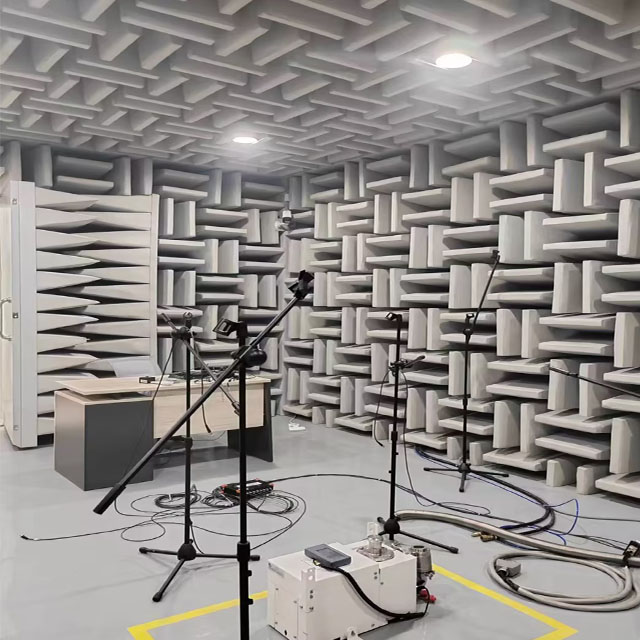The relationship between the size of the semi anechoic chamber and the size of the tested sample
A semi anechoic chamber is an acoustic testing environment designed to provide an ideal testing condition for measuring and evaluating the acoustic performance of various equipment or systems. When designing a semi anechoic room, multiple factors need to be considered, including the size, shape, selection and arrangement of sound-absorbing materials, to ensure the uniformity and stability of the indoor acoustic environment.
For the relationship between the size of a semi anechoic chamber and the size of the tested sample, generally speaking, the size of a semi anechoic chamber should be large enough to meet the testing needs of the tested sample. Specifically, the volume of a semi anechoic chamber should be at least 200 times that of the tested product. This can ensure that the tested sample has sufficient space for testing in a semi anechoic chamber and will not be affected by boundary effects on the test results.
In addition, it is necessary to consider the height of the floor and ceiling of the semi anechoic room, and reserve sufficient height. This can ensure that the tested sample has sufficient space to move up and down in a semi anechoic room, and there will be no acoustic reflection or scattering caused by the ceiling or floor.
In summary, when selecting the size of a semi anechoic chamber, it is necessary to comprehensively consider the size of the tested sample and testing requirements to ensure that the semi anechoic chamber has a good acoustic environment and can accurately measure and evaluate the acoustic performance of the tested sample.

